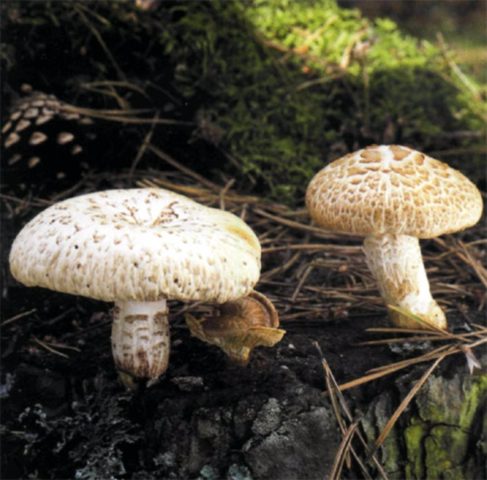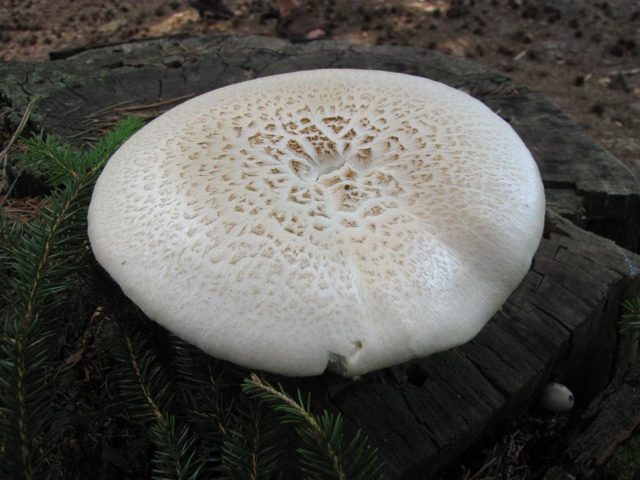Content
Scaly sawle, or Sleeper mushroom, belongs to the conditionally edible species of the Polyporovye family. Grows in small families on coniferous tree stumps. Since it has false counterparts, you need to familiarize yourself with the external description, view photos and videos.
What does the scaly sawleaf look like?
During a quiet hunt, many mushroom pickers pass by this species, not knowing that it can be eaten and that it has beneficial properties. To recognize the scaly leaf, you need to know the external characteristics.
Description of the hat
The cap of the scaly leaf is rounded-convex, gradually straightens with age, leaving a small depression in the center. The surface is covered with off-white or gray-brown skin, which cracks in dry weather. A cap with a diameter of 10 cm or more has numerous brown-brown scales. The bottom layer is formed by thin, dirty yellow plates. Reproduction occurs by microscopic spores, which are located in a whitish powder.
Leg description
The cylindrical leg reaches a length of 6 cm. Closer to the ground, it narrows and becomes tapered-elongated. The surface is covered with a whitish skin with red or light brown scales. In young specimens, the flesh is soft, firm, with a pleasant mushroom taste and smell. With age, it becomes tough, so old mushrooms are not used for food.
Where and how it grows
The scaly sawfoot prefers to grow on stumps, felled and decaying coniferous wood. It can also be seen on wooden structures such as sleepers and telegraph poles. To preserve wooden structures, railroad workers treat the items with antiseptics. But this representative is not harmed by drugs, and he continues to grow and develop in the same place. Thanks to this, the scaly leaf has a second name, the Sleeper mushroom. Fruiting occurs during the entire warm period, but the peak occurs in the middle of summer.
Is the mushroom edible or not
The mushroom is conditionally edible, but due to the place of growth, it does not have many fans. From the harvested crop, you can prepare fried, boiled or canned dishes.
Due to the useful and medicinal properties, this representative of the forest kingdom has gained popularity among mushroom pickers from the East. In the dried form, the scaly sawgelle has antitumor properties. When using this representative of the forest kingdom in fried and stewed dishes, the body receives a large amount of nutrients that fight infectious diseases.
Doubles and their differences
The scaly sawfoot has a characteristic appearance, so it is very difficult to confuse it with other species. But this representative has related counterparts:
- Goblet - an inedible forest dweller.Grows on decaying and felled deciduous wood. It can be recognized by its funnel-shaped cap of a reddish-whitish color. With age, the surface fades and becomes pure white. The leg is thick and short, completely covered with plates. The pulp is firm, firm with a pleasant fruity aroma.
- Tiger - belongs to the 4th group of edibility. Only young specimens are eaten. Dense flesh of a snow-white color, with mechanical damage it turns red. It can be found on felled conifers from early summer to mid-September.
Conclusion
Scaly sawfoot is a conditionally edible mushroom that grows on rotten felled wood. Young specimens collected in an ecologically clean place are eaten. Fruiting lasts the entire warm period, but July is considered the most fruitful month. Since this species has inedible cousins, you need to carefully study the external description and look at the photo before a quiet hunt.













